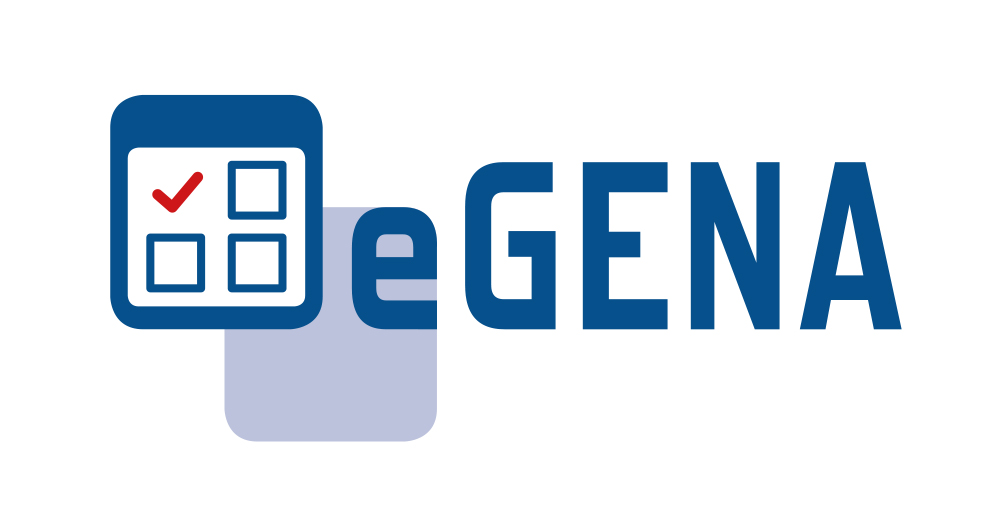Dear visitor,
welcome to the English website of eGENA (which stands for ‘electronic cognitive aid for emergencies in anaesthesia’) developed by the German Cognitive Aid Working Group.
During the past decade it has been repeatedly questioned why no national or international body has yet attempted the task involving expert consensus, human factors engineering and pooled resources to develop a cognitive aid for crisis management in anaesthesiology:
"With several decades passing since the introduction of these kinds of aids, is it surprising that no national body in the United States and many other countries, and no international body, has attempted to create a more comprehensive set of perioperative cognitive aids through formal consensus approaches? One can only conjecture that the task is daunting logistically, politically, and financially“ Gaba D. Perioperative cognitive aids in anesthesia: what, who, how, and why bother. Anesth Analg (2013) 117:5; 1033-36
"Perhaps the next step should be the development of cognitive aids for the management of anaesthetic room emergencies using national expert consensus and pooled resources. (...) To maximise benefit, cognitive aids need to be developed at a national level" Jenkins B. Cognitive aids: time for a change? Anaesthesia (2014) 69, 655-68.
To accept this challenge, the Professional Association of German Anaesthesiologists (BDA) and the German Society of Anaesthesiology and Intensive Care Medicine (DGAI) developed a digital cognitive aid for intra- and postoperative emergencies using an iterative user-centered design process according to DIN EN ISO 9241-210. The details for the development process have been published (see below).
eGENA is a progressive-web-application (PWA) that can be downloaded and installed on any mobile and stationary device.
The download and use of eGENA is for free. In order to be able to tailor some of the content to the needs of the user’s department, a registration is necessary.
What is a cognitive aid?
Cognitive aids, aptly described as a “host of physical (or now virtual) items aimed to assist professionals in executing the complex decision making of diagnosis and therapy” have come to be viewed as promising tools in the management of critical events. Cognitive aids can take on many forms, like e.g. books, checklists, emergency manuals, apps, websites or calculators.
Why should we use cognitive aids?
Emergency situations in anaesthesia create an enormous workload for those involved in regard to decision making and acting on incomplete information in an uncertain, dynamic and stressful environment. Potentially life-threatening conditions have to be recognized, evaluated and treated in time and in a coordinated, interdisciplinary manner. Over the last years, many medical specialties involved in acute care have come to recognize the limits of human cognition during these critical situations. It has been widely acknowledged in anaesthesiology that stress can have negative impact on both individual cognitive function as well as effective team performance. This change in attitude is the result of a large body of scientific evidence that shows how stress not only induces physiological changes, but also influences our ways of thinking, feeling, and acting: Stress leads us to focus and prioritize our cognitive resources on one specific problem, while dynamic changes or new problems are readily overlooked; this is commonly referred to as “tunnel vision” or “fixation error”. We also tend to oversimplify, and especially calculations of dosages become increasingly error-prone. The same goes for teamwork: discussions and the establishment of a shared understanding are often skipped, team members remain silent instead of speaking up about potential problems, and important knowledge is lost.
Bottom line: Actors under stress can greatly profit from external input, be it another person or a specifically designed tool, to support their cognitive efforts and help to avoid common traps. One of the most widely known cognitive aids is the checklist.
Checklists applied to anaesthesiology: differences to aviation
While checklists have been an integral part of the safety strategy in aviation for many decades, progress in establishing related concepts in anaesthesiology has been slow. Reasons for the often seen reluctance of healthcare providers to use such an aid are poor usability of those cognitive aids and the fact that these cognitive artefacts do not support established treatment processes. The main reason, however, why checklists are not nearly as widely used in medicine when compared with aviation, is the inherent property of complex, biological systems. It is the difference between (incredibly) complicated but linear technical systems and complex, non-linear biological systems.
In a technical system, no matter how complicated, it is ultimately possible to describe, design and control systems interactions between different components. This also enables designers and engineers to define a seqeunce of actions as the best possible solution for a problem. These are tested, refined, and ultimately prescribed as standard operating procedures and can be reproduced using a checklist. An example is an engine failure on an airliner.
In a biological system, however, due to the inherent complexity, the same malfunction (or symptom) can have a multitude of causes (e.g. intraoperative desaturation). So instead of having the one correct solution prescribed in a checklist, problem solving includes heuristics, differential diagnosing, as well as expertise and experience. This is also reflected in the use of guidelines, which generally try to be all-encompassing and cover a wide variety of underlying causes in the diagnostic approach to a newfound problem. This challenge of complexity, of course, has to be reflected in a tool, or cognitive aid, that is meant to support the process.
What kind of support does a cognitive aid offer?
A cognitive aid cannot provide "answers” or solutions in form of a concise checklist, but it can support the user by offering suggestions, possible solutions and a multitude of information that is needed for the treatment of different conditions (applicable guidelines, drugs, dosages, but also logistical support, information about equipment storage, hospital capabilities, etc.).
So what is eGENA?
eGENA is an digital interactive cognitive aid for intraoperative crisis management in anaesthesia that offers information for a multitude of perioperative complications. It has been developed to support trained expert teams to remember and excel, rather than to help novices cope with situations beyond their expertise (to quote Stewart Marshall).
eGENA can be further tailored to the users’ needs with the addition of locally relevant information (phone numbers, storage locations, capabilities, logistical information). It was designed with a user-centered design process according to DIN EN ISO 9241-210 and offers several ways for accessing the desired content. Its current implementation into clinical work is accompanied by studies to explore and understand how users and patients can benefit most from the additional layer of knowledge and support introduced into the modern OR by adding eGENA.
How to access eGENA
eGENA is a progressive-web-application which stores information offline on stationary and mobile devices. At present, a German language version of eGENA can be downloaded for free from this website or from the website of the German Society of Anaesthesiology and Intensive Care. Both websites offer comprehensive training material aimed at supporting local teams in their efforts to implement eGENA at their department.
The direct link to the download of an English demo-version with limited content can be found here.
The German Professional Association (BDA) and the Society for Anesthesia and Intensive Care (DGA) have no intention of creating a full Englisch version. However, as the container and the content of the app can be translated into any language, we would share the app for free with any national body interested in creating and promoting their own national cognitive aid.
In order to download the full German version, access this page
The first time eGENA is opened it appears as a normal website. However, modern internet browsers (e.g. Chrome, Edge, Firefox) allow the installation of an PWA to the desktop. On mobile devices, this is accomplished by adding the website to the homescreen (Figure 1).
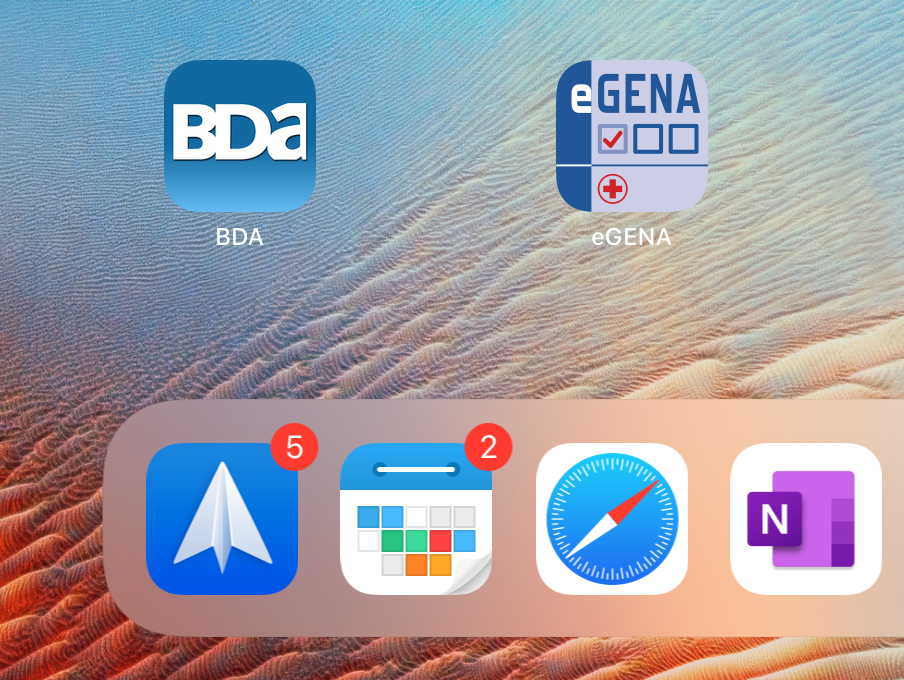
Figure 1: eGENA is a progressive web application and can be added to the homescreen of any device. The only precondition is that the browser supports PWAs.
eGENA automatically checks the screen resolution of your mobile device and displays the app accordingly (Figure 2 a + 2b).
Once eGENA has been added to the homescreen, the complete content is downloaded and available for offline use. Every time eGENA is reopened, the connectivity of the device is checked. If online, eGENA checks for updates. If offline, the user can work with the stored content.
The user can access information by first choosing a patient group (Infant, Adult, Parturient) and then one of the following search options: ‘Resuscitation’, ‘Alphabetical search’, ‘ABCDE approach’, and ‘Body navigator’ (Figure. 2 - 4).
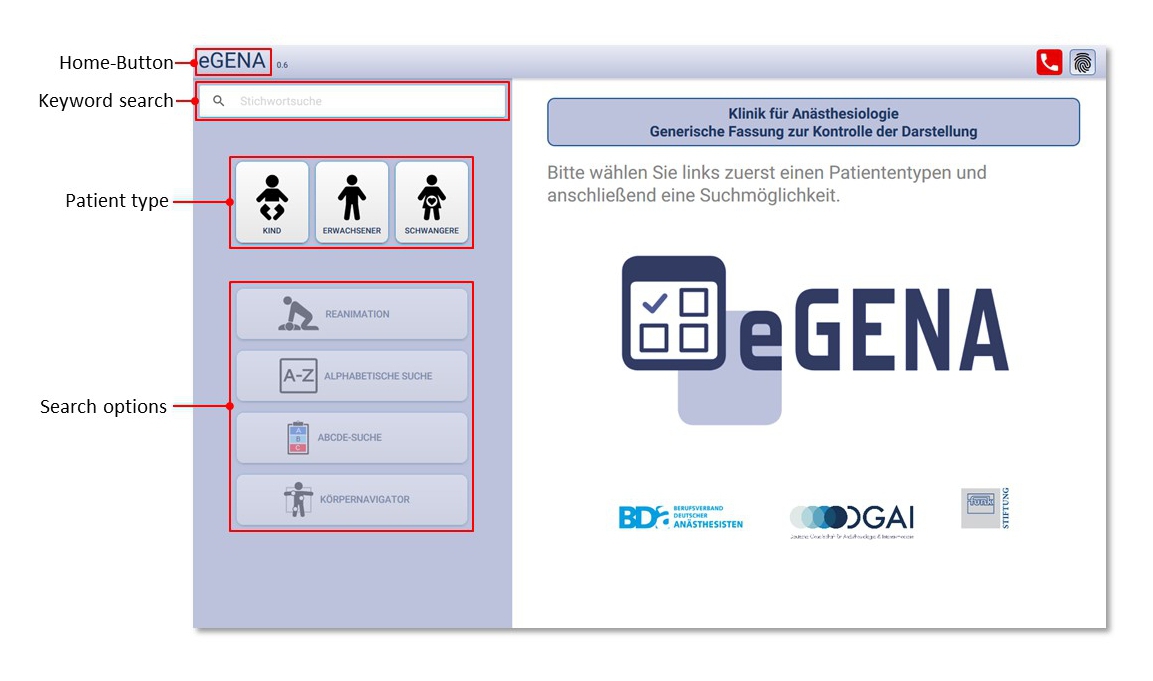
Figure 2a: The initial appearance on a tablet screen

Figure 2b: The initial appearance on a smartphone
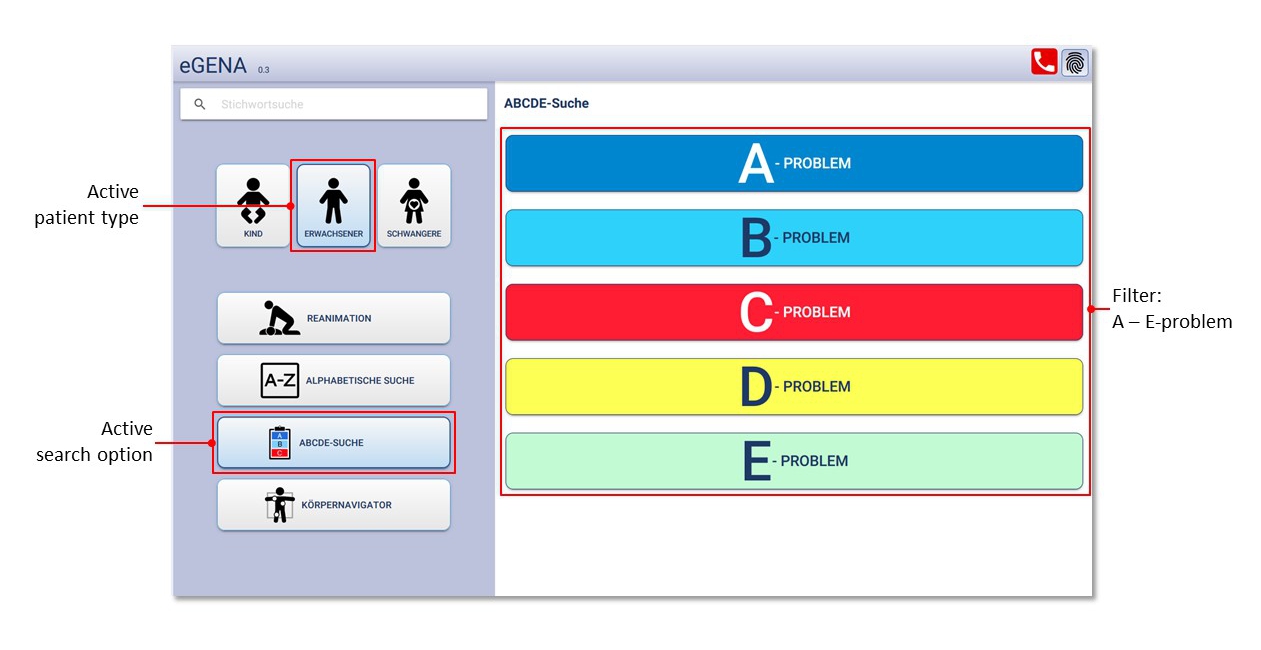
Figure 3
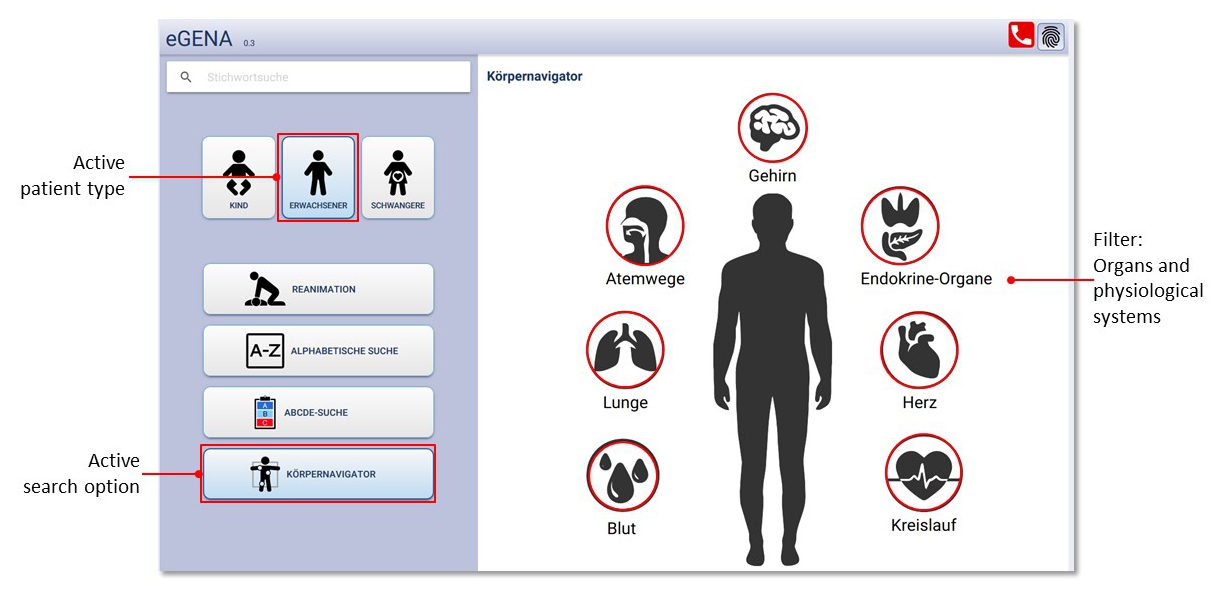
Figure 4: Body navigator
The information accessed is further tailored to the patients’ clinical status: ‘awake’ vs. ‘anaesthetised’ (to include emergencies under regional anaesthesia and in the recovery room), and ‘hemodynamically stable’ vs. ‘hemodynamically unstable’. Information is not presented as one single continuous text, but rather subdivided into threee management tabs related to ‘immediate action’, ‘diagnosis’, and ‘therapy’. Information not pertaining to the linear sequence of action is presented under ‘symptoms’ and ‘differential diagnoses’ (Figures 5-7).
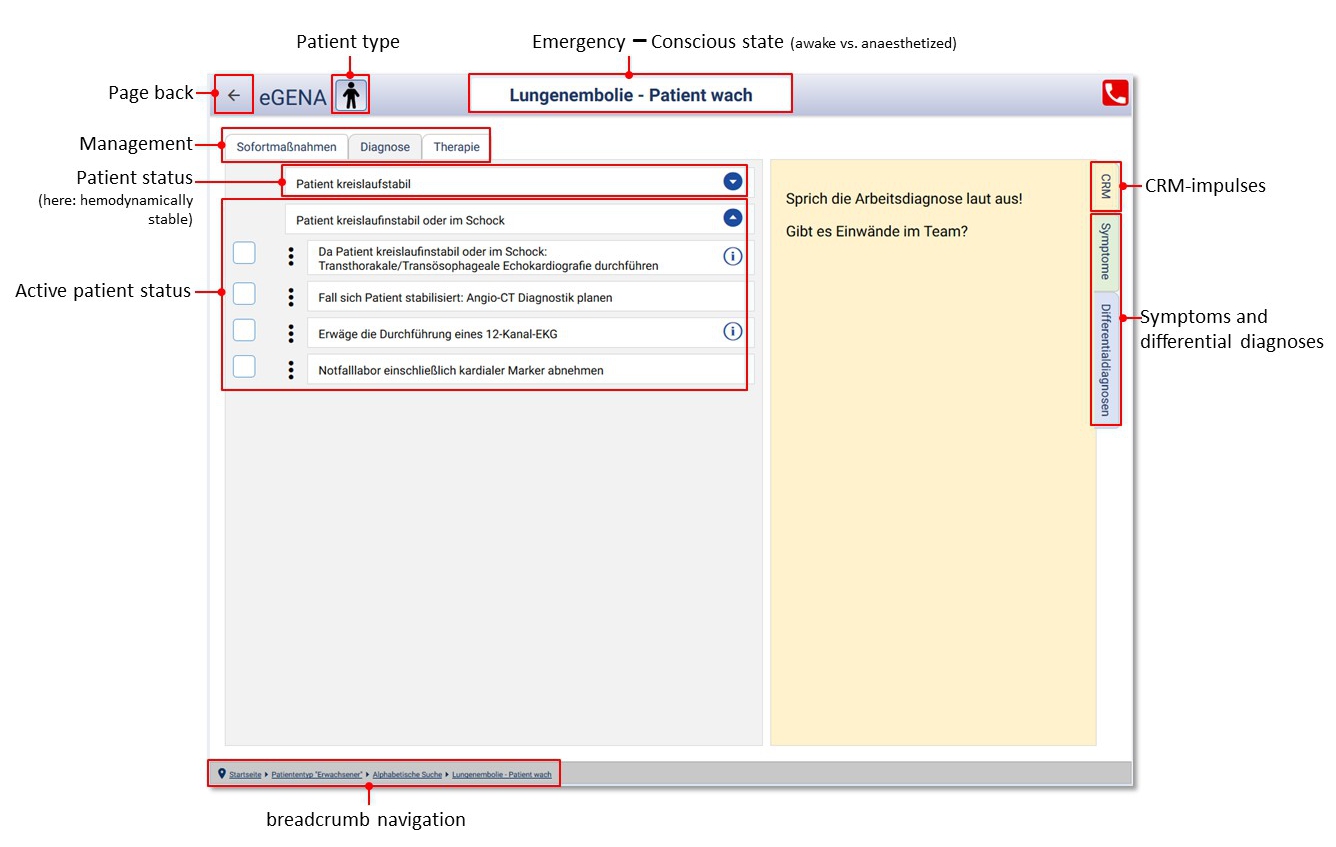
Figure 5: Immediate action in an awake, hemodynamically instable patient with the suspected diagnosis of pulmonary embolism
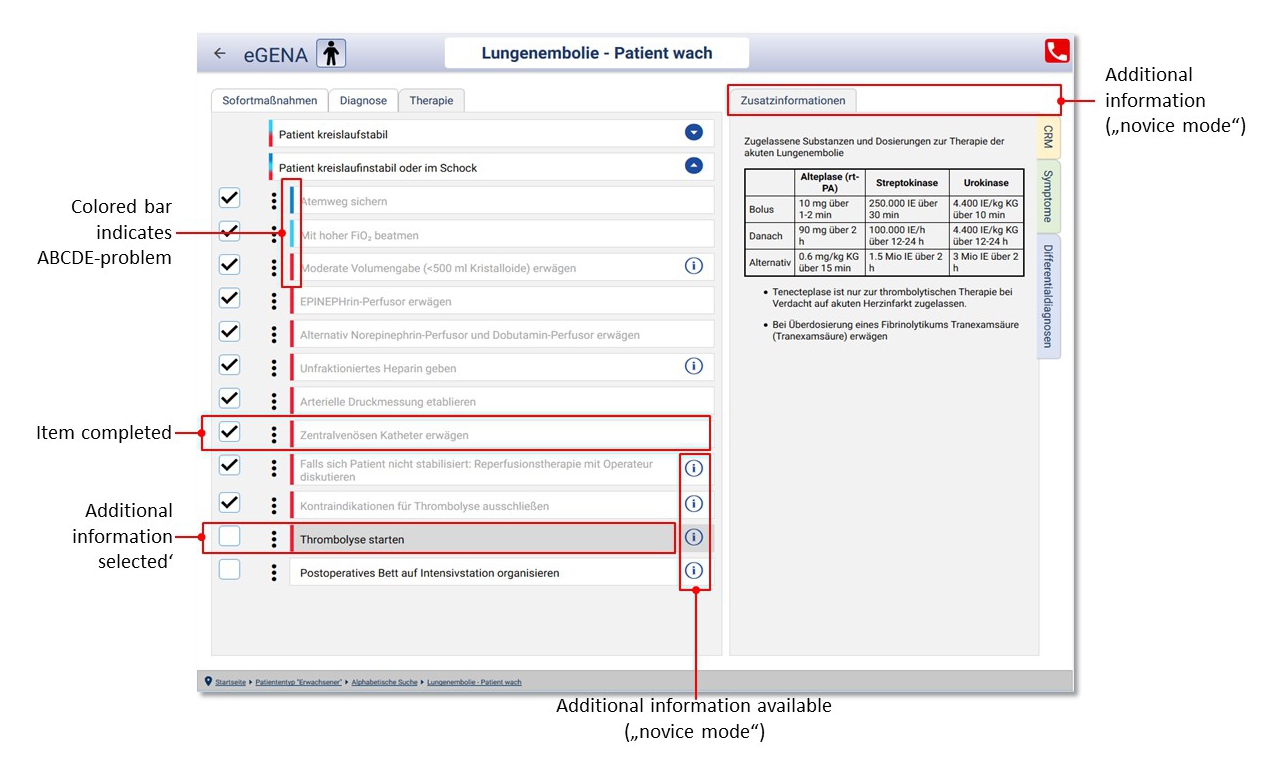
Figure 6: Treatment for an awake, hemodynamically instable patient with the suspected diagnosis of pulmonary embolism. On the right the tab with additional information regarding dosage of thrombolytic agents has been selected.
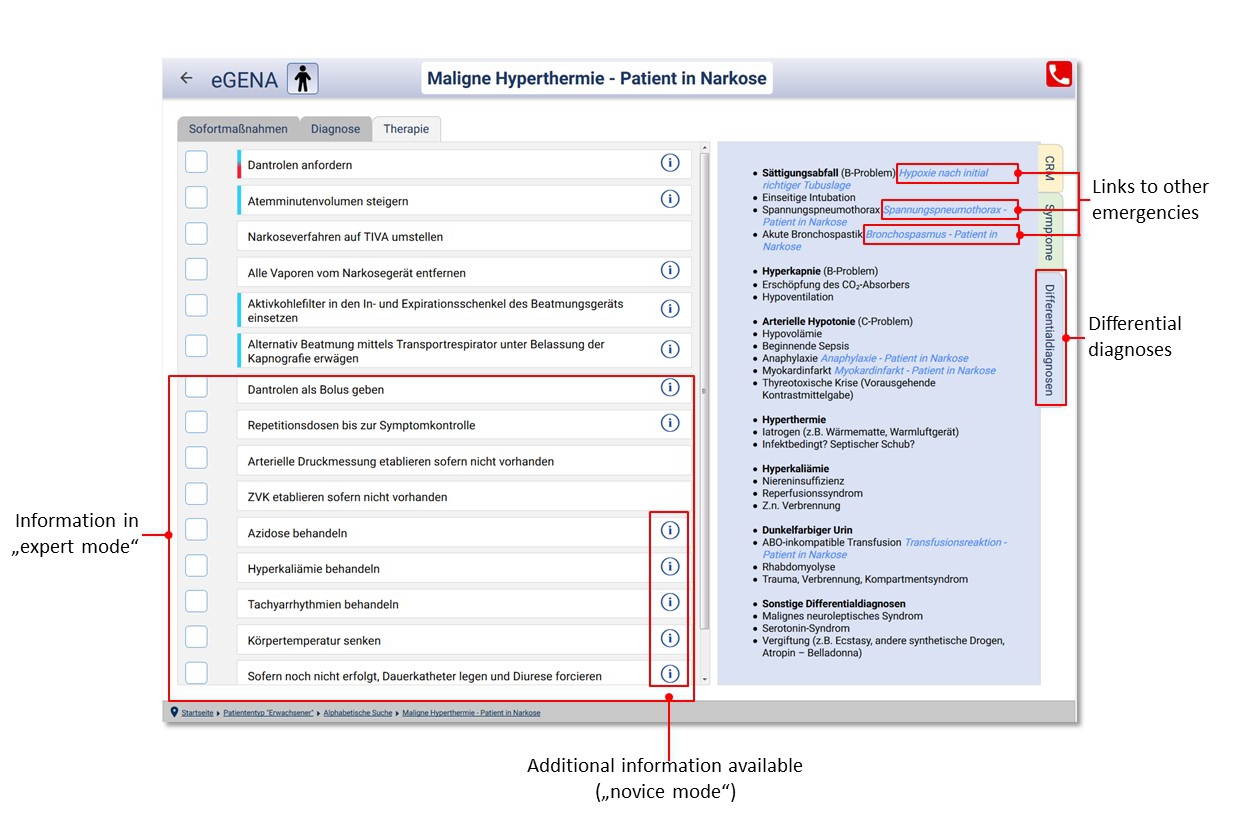
Figure 7: Immediate action in an anaesthetized patient with malignant hyperthermia. On the right the tab with differential diagnoses has been selected.
To date, eGENA comprises more than 50 emergencies including those listed in the Helsinki declaration of patient safety in anaesthesiology for which institutional protocols are recommended. In addition, eGENA supports non-technical skills by providing CRM-impulses for decision making, teamwork and resource management.
Customizing eGENA
Acknowledging the adage that “safety is local”, individualization was a key requirement during development. Using a special editor, users can customize eGENA by editing locally relevant information like phone numbers, drug names or equipment storage locations and share the revised content with a local user group (e.g., anesthesia department).
Future challenges
Several challenges will require further research: One is to understand the physical, cognitive and social aspects of implementing cognitive aids into established processes of anaesthesiologic crisis management. Currently, a large multi-centre study is trying to better understand team dynamics and usability aspects using eGENA during a simulated perioperative crisis. Moreover, the technical, organisational, and cultural challenges when introducing a new artefact as additional actor into an already complex environment will be explored by monitoring the implementation efforts of a diverse range of anesthesia departments during the next years.
Questions and collaboration
To this extend, the German Cognitive Aid Working Group is also interested in cooperating with other professional bodies to provide foreign language versions for broader, shared research. The authors welcome any requests from interested parties for future collaboration.
If you need any further information or if you are interested in collaborating, please contact Michael St.Pierre, the senior researcher of the eGENA-project: Diese E-Mail-Adresse ist vor Spambots geschützt! Zur Anzeige muss JavaScript eingeschaltet sein!
Bibliography
Neuhaus C, Schild S, Eismann H, Baus J, Happel O, Heller AR et al: Functionalities and operating instructions for eGENA, the German digital cognitive aid for crisis management in anaesthesiology (in GERMAN). Anästh Intensivmed 2020;61:340–351. DOI: 10.19224/ai2020.340
Eismann H, Schild S, Neuhaus C, Baus J, Happel O, Heller AR, Richter T, Weinert M, Sedlmayr B, Sedlmayr M et al: Cognitive aids for crisis management in anaesthesiology. Principles and applications. Anästh Intensivmed 2020, 61.:239-2
https://www.ai-online.info/images/ai-ausgabe/2020/06-2020/AI_06-2020_Sonderbeitrag_StPierre.pdf
Schild S, Sedlmayr B, Schumacher A-K, Sedlmayr M, Prokosch H-U, St.Pierre M: A Digital Cognitive Aid for Anesthesia to Support Intraoperative Crisis Management: Results of the User-Centered Design Process. JMIR Mhealth Uhealth 2019, 7(4):e13226
https://mhealth.jmir.org/2019/4/e13226/
Schild S, Gruendner J, Gulden C, Prokosch H-U, St Pierre M, Sedlmayr M: Data Model Requirements for a Digital Cognitive Aid for Anesthesia to Support Intraoperative Crisis Management. Applied Clinical Informatics 2020, 11(01):190-199
https://www.thieme-connect.com/products/ejournals/html/10.1055/s-0040-1703015
Disclosure
The development of eGENA was supported by a grant by the Funk Foundation (risk management project RM-FS3-2017-1).



